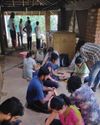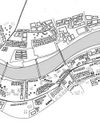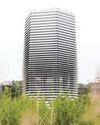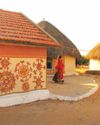
An exposed brick building is often tied or likened to practicing or attempting ‘sustainable’ building practices. Be it the legacy of Laurie Baker or the highly cost-effective prototypes for the less privileged by Late Mr. Anil Laul (Anangpur Building Centre); both practices follow distinct styles of building and exist in disparate social contexts. Yet both methodologies are often ascribed under a broad category of sustainable design. Which is not to say that neither system is unsustainable, but ‘sustainability’ as a keyword does overshadow many poetics of architecture. For Baker, the building was as unique as an individual; each of his design was a living entity. He nurtured them with the respect and regard that one may have towards another person. This reverence perhaps translated to the rhythmic spaces and volumes into buildings that demonstrated dramatic spatial experiences and bespoke brick-detailing in every structure that he created. Alongside, Baker’s philosophy of design was also rooted in site-specific conditions, ecological betterment of the precinct, economics and so on. And then he endeavored to propagate about his construction systems; an attempt to ‘sustain’ knowledge and expertise for generations to come. And Costford currently upholds the practice but somewhere the takeaway from Baker’s legacy is only limited to the tangibles of material, site, and economics. The intangibles, the narratives, and poetry are perhaps seldom addressed.
هذه القصة مأخوذة من طبعة September 2019 من Indian Architect & Builder.
ابدأ النسخة التجريبية المجانية من Magzter GOLD لمدة 7 أيام للوصول إلى آلاف القصص المتميزة المنسقة وأكثر من 9,000 مجلة وصحيفة.
بالفعل مشترك ? تسجيل الدخول
هذه القصة مأخوذة من طبعة September 2019 من Indian Architect & Builder.
ابدأ النسخة التجريبية المجانية من Magzter GOLD لمدة 7 أيام للوصول إلى آلاف القصص المتميزة المنسقة وأكثر من 9,000 مجلة وصحيفة.
بالفعل مشترك? تسجيل الدخول

Interlacing Perspectives
‘Meraki-2019’ A visionary Seminar series presented by Dr.Baliram Hiray College of Architecture, Bandra(East), Mumbai.

Facilitating A Community Through Architectural Practice
The humble, self-designed, self-built and organically planned home built by the majority of the world population rarely gets appreciated and critiqued as a viable lesson in architectural design.

The Art Of Solving Problems Creatively
The practice of architecture is perhaps incomplete without the complement of a variety of other arts.

Upcycling towards a playful tomorrow
Play is like the middle child, often forgotten, and always taking a back seat. For young kids, play can simply be running around, armwrestling with friends, building sandcastles on the beach, or singing popular music tracks in the shower.

Balancing The Poetics And Pragmatism Of Everyday Design
Humanity is faced with an oxymoronic crisis. The crisis involves the earth, the environment, impending looms of climate change, deforestation, loss of species, dwindling resources etc.

Just Give Me Some Space: Discussions And Beyond
Just Give Me Some Space (JGMSS) is Suha Riyaz Khopatkar’s debut book that paints a portrait of the dynamic life of an architecture student.

The Next In Vernacular Architecture
Architecture has become a capitalist.

Rethinking The Future: Architecture And Its Education
“I want to be like animals, the bird makes a nest in one or two days, the rat digs a hole in a night, but intelligent humans like us spend 30 years to have a house, that’s wrong.” - Jon Jandai

Uniting The Human-Scale With The City-Scale
London-based architect Usman Haque is famed for his interactive architectural systems, and for his exploration of newer, more effective ways of creating human engagement and interaction through his designs. Indian Architect & Builder caught up with him, to quiz him on a variety of topics such as his journey as an architect, his inspirations and philosophies, architects using the digital revolution to their advantage, and more!

Framing spaces
Almost every architect also doubles as a photographer or at least an enthusiast.